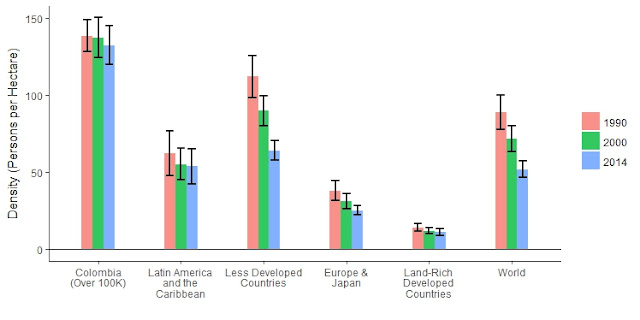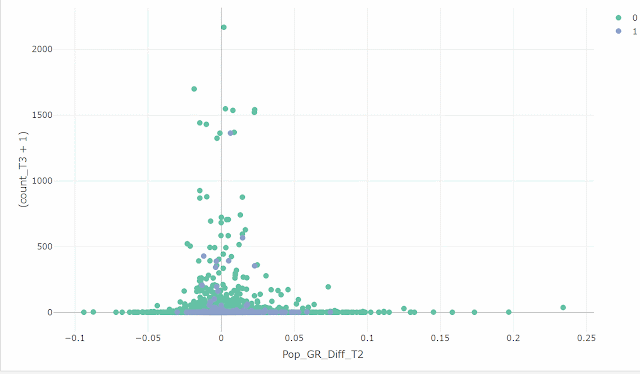Visualization of work/home density and get a good heat map

Show the distribution of jobs and homes Technical discussion on how to apply the heatmap properly R code (Revise on 4/1, on the Friday meeting, a colleague (Xinyue) reminded me a better way to handle the heat map. By taking the log of a highly skewed value the heatmap looks much better) The distribution of homes and jobs in Chicago It is an interesting idea to map both home and job density on the same map. The job locations are more concentrated, especially so in the city center. The 2km x 2km block with most jobs is 13 times the height of the block with most homes. (474 k vs. 37 k). The 2km x 2km block with most jobs contains 13% of the total jobs, while the one with most homes contains only 1% of all the homes. Distribution of Jobs: if use heatmap : of homes: if use heatmap: In animation: Technical discussion on heatmap: The jobs are more concentrated in the city center than homes. When the distribution is highly skewed the ...




